Home of the famous Chassell Strawberry Festival, the small town of Chassell, Michigan has become well-known for having some of the BEST strawberries in the world. While strawberry farming has been an important part of Chassell’s economy since the early 1920’s, lumber was the leading industry that built the community during the 1800’s. The Chassell Historical Organization and local community partners have worked together to keep this heritage alive, and we’ve put together this brand-new guide to share that heritage with you.
Early Inhabitants of Pike Bay
The original inhabitants of the Chassell area were the Ojibwa people. According to an exhibit at the Chassell Heritage Center, they called themselves the Anishinabe, which means “first man” or “original man,” and were called Ojibwa by neighboring Native American tribes. These early inhabitants hunted wild game, fished in Pike Bay, foraged wild berries and rice, and grew corn for their families. They were also extremely good at trapping and traded furs throughout the region. Native American artifacts and burial grounds have been found in the Chassell, as well as the neighboring Keweenaw Bay area.
The First European Settlers
The French-Canadians were the first immigrants that settled in the area. They arrived as soon as the 1860's and 1870's and settled in the Sturgeon River area and along Paradise Road. Besides farming, they also cleared land and sold timber to various private loggers or had their own smaller logging operations. The first Scandinavians and Finns settled in Portage Entry around the 1870's and were primarily fisherman and farmers. Both groups were attracted to Houghton County because of the opportunity of employment in regional copper mines, but neither group had much experience with mining. Once they had the resources to purchase their own land, they would.
Behind the Name Chassell
The town of Chassell is named in honor of John Chassell, one of the earliest European settlers in the Chassell area. John Chassell moved to Houghton County in the 1860’s after living in New York for many years. Not only was he influential in raising capital to start the First National Bank of Houghton, but he also served as the first cashier of this important financial institution. In 1867, he purchased farmland from the St. Mary’s Canal & Land Company and built a home on Pike Bay. John Chassell lived in this location until 1881 when he sold his property to the manager of the Sturgeon River Lumber Company, Orrin W. Robinson.
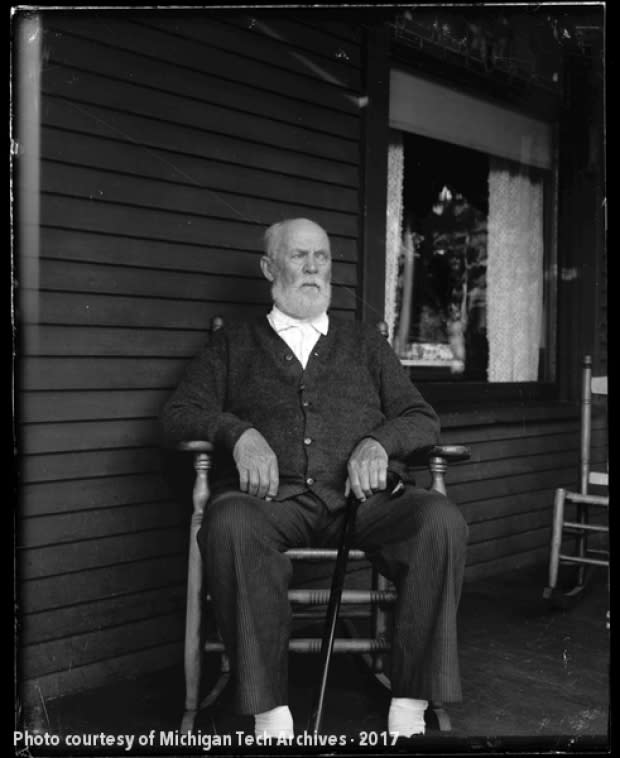
Orrin W. Robinson sitting on his front porch in Chassell, MI | Photo courtesy of MTU Archives
During the time that Chassell owned the land, it was known as Pike Bay. After Robinson purchased the land, the growing community was known as Robinson. It was later discovered that another Robinson already existed in the State of Michigan, and postal regulations would not allow two post offices with the same name. Therefore, the name Chassell was chosen in honor of the area’s first private landowner and his contributions to the community. The application for Chassell Township was accepted on April 14, 1888.
Sturgeon River Lumber Company
This Sturgeon River Lumber Company was founded in 1873 and operated out of Hancock during its early years. Due to increased business demands, Robinson made the decision to move the company to Chassell for expansion in 1888. The Sturgeon River Boom Company (responsible for transportation of logs) already operated in this area, and the decision to move the mill to Chassell made a lot of sense. At this time, Robinson also moved his family into John Chassell’s former home where they lived until the completion of their new home that was built on the same lot.
The farmland that Robinson purchased from John Chassell was used to build the new mill. The mill processed pine trees cut throughout the Sturgeon River Valley, many of which measured five or six feet in diameter.
From Forest to Mill
Cutting massive pine trees was no easy task. Hardworking lumberjacks lived in remote camps to get the job done, and much of the harvest took place during the cold (and snowy) winter months. Trees were cut down using axes and crosscut saws, then cut into logs to send to the mill.

Horses were used to help transport logs to the mill. | Photo courtesy of MTU Archives
Transporting the lumber to the mill also proved to be a difficult task. Massive logs were stacked and chained on skidders, then hauled via ice roads to nearby rivers using horse power. The logs were then floated downriver to the mill. Log drivers would ride these logs downstream and guide them to prevent log jams. If the river froze, these logs would form a solid mass and need to be broken up during the spring melt.
Timber Demands
Copper mining provided a local demand for timber. Timber processed at Chassell’s lumber mill was used for bracing mine shafts and in the construction of buildings throughout the region. Additional lumber was shipped on freight trains to other places in the United States, and even by ship to other places in the world.

The Sturgeon River Lumber Company brought a lot of people to the Chassell area. | Photo courtesy of MTU Archives
Growth of the Town
The lumber industry demanded a substantial amount of labor to operate smoothly, and the town started growing rapidly during the late 1880s. Some of the employees working for the company were European immigrants (particularly Finns) and French-Canadians. Others traveled to the Chassell area from Marinette, Wisconsin. The employees who came from the Marinette area were known to Charles Worcester and General Manager, Edward Hamar, because Worcester already had a lumber operation in Marinette. Edward Hamar was also an employee of Worcester's Marinette operation. Even today, this history lives on in the name of Chassell's Marinette Street.
In 1887, the Sturgeon River Lumber Company built the “Chassell House” near the mill to help meet increased housing needs. By the 1890’s the town had grown to include the Chassell Post Office, general stores, schools, churches, and even a railroad depot.
Worcester Lumber Company
The Sturgeon River Lumber Company continued operating until 1902, at which time they sold their assets to Charles H. Worcester for $65,000. Charles Worcester formed the Worcester Lumber Company the following year. When Worcester took over Sturgeon River Lumber Company, it was evident that there was a housing shortage. Several houses were built on Main Street and Marinette Street and rented to employees and their families. The company also provided water, fire protection, and power for streetlights.
By the time Worcester purchased the company, nearly all the pine had been cleared from the timber lands. Under the discretion of General Manager, Edward Hamar, the Worcester Lumber Company cleared other varieties of trees, as well. When lumber camps started moving farther away from the mill, the company purchased a locomotive engine and hauled timber on the company owned railroad from camps near Worham, Tapiola, and Elo.
The Worcester Lumber Company grew to become one of the largest in the Great Lakes region, producing 20 to 30 million board feet of lumber per year and employing hundreds of men at the mill, on the railroad, and in lumber camps. Eventually, the decline of copper mining in the region and the onset of the Great Depression led to a decrease in timber demands. The Worcester Lumber Company closed for good in 1928.
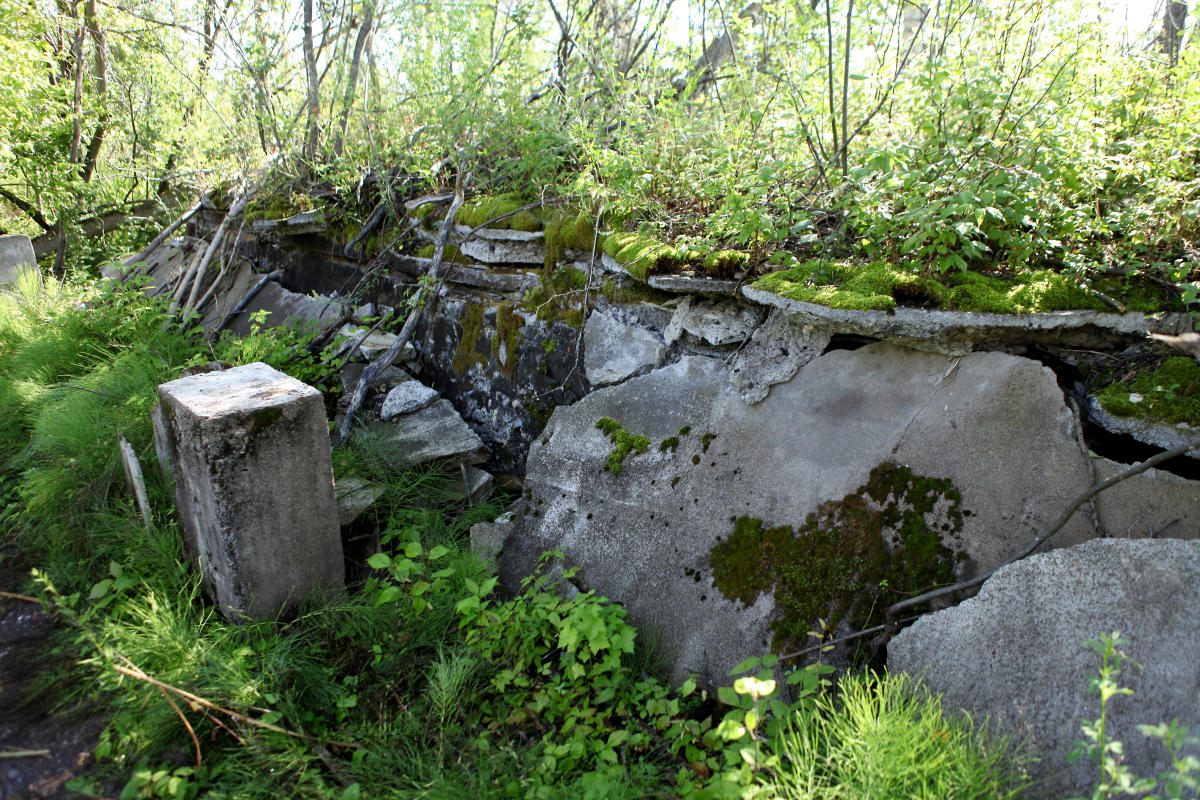
Little remains of what was once the greatest lumber mill in the region. These cement ruins can be seen on the Chassell Historic Trail.
Farming
From subsistence farms to commercial growers, farming has always been an important part of Chassell’s history. Early settlers in the Chassell area grew food for their families, using root cellars to store food for the winter months. Many French-Canadians migrated to the region to work in the mines and settled in the Chassell area to farm after realizing the difficulties of mine life. The French-Canadians formed a rather large farming district on Paradise Road.
The majority of the Finnish population didn't settle Chassell until the 1910's when cut-over timber was available for purchase or established farms were being sold. Originally, Finnish immigrants were attracted to Houghton County for employment in the mines, but once they had saved enough money to purchase land, they would. Many Finnish immigrants would work in the lumber camps during the winter and return to working on the farm during the fleeting summer months. A good portion of the Finnish homesteads were located on Pike River Road.
Farmers in the area had success with many different types of crops, including vegetables, grains grown for farm animals, and potatoes. Some farms also raised cattle, horses, pigs, sheep, and chickens. Many farms raised dairy cows and sold their milk or had it made into butter, cream, or cheese. For a short time, Chassell even had its own creamery.
As the lumber industry came to an end in the 1920’s and 30’s, the community turned to farming as their primary industry. The crops that proved to be most successful were potatoes and the highly coveted Chassell strawberry.
Potato Farming
The Keweenaw’s cool, moist summers provided the perfect environment for growing potatoes. Prior to the Depression, potatoes were primarily grown for the family and sold in local markets. At that time, potatoes had to be handpicked after being exposed by a machine. During the Depression era, the government introduced rural farmers to fertilizers, pest control, certified seeds, and new techniques. This assistance improved the productivity of local potato farmers.

Potatoes were picked by hand, until local farmers were able to purchase mechanical pickers. | Photo courtesy of MTU Archives
In 1935, local potato farmers formed a cooperative and combined their harvest to sell to outside markets like Milwaukee and Chicago. The cooperative also made it possible for local farmers to share the cost of important farming equipment like mechanical potato pickers.
Strawberry Farming
Bright red, sweet, and juicy... Chassell’s strawberries gained a reputation for being some of the best strawberries you can find in the Midwest.
The Copper Country Strawberry Growers Association was formed in 1936 to help fulfill shipping demands. During the first year, the organization handled about 5,000 cases of strawberries, with that number more than doubling by 1937. Strawberries were graded and shipped by railway to markets like Milwaukee, Chicago, and Green Bay.

The Copper Country Strawberry Association shipped strawberries on trains to distant markets in the Midwest. | Photo courtesy of MTU Archives
Later in the 1960's, a second growers association was formed: the Copper Country Fruit Growers Association. The association included hundreds of growers that shipped berries to large fruit markets throughout the Midwest. Shipping was open to all strawberry growing members of the tri-county area for over 40 years, and the industry provided essential employment for children, teens, and women of the Copper Country.
Strawberries became such an essential part of the local economy that the newly chartered Chassell Lion’s Club made the decision to recognize the Copper Country Strawberry Growers Association with the Chassell Strawberry Festival in 1949. The first festival was held July 7-9 of 1949 and included strawberry judging, a parade, a Queen’s Competition, music, and old-fashioned festival activities. During the inaugural celebration, Governor G. Mennen Williams crowned the first-ever Strawberry Festival Queen, Lucille Tormala.
The festival has been largely successful throughout Chassell’s history and celebrated its 75th year in 2023. Chassell Strawberry Festival has been the Friday and Saturday following the 4th of July since it first started in 1949. This is typically the time that local strawberries are at their prime!
Commercial Fishing
Chassell is well-known for being a great place to drop a line. Located on Pike Bay with direct access to the Sturgeon River, Portage Canal, and Lake Superior, fisherman in the area catch a decent variety of fish.
While commercial fishing was always a part of Chassell’s history, it wasn’t until the 1930’s when the fishing industry really picked up. Between the 1930’s and 1960’s The Dormer Fish Company operated at the south end of Portage Entry and shipped whitefish, lake trout, herring, and chubs by rail to markets in Wisconsin and Illinois.

Chassell Heritage Center has a nice museum exhibit about the history of commercial fishing in Pike Bay.
The Dormer Fish Company also operated a herring processing plant in Portage Entry. Peak season for herring took place in October and November, providing an economic boost to the women and farmers who were responsible for cleaning, salting, and packaging the fish in barrels at the processing plant. Herring from the Dormer Fish Company were also shipped to southern states and military bases during World War II. Many of the fishing boats used were built in Chassell by the Wiinikka or Koski families.
Sports & Recreation
Chassell takes great pride in the success of its sports teams. The first basketball team was organized in 1910, the first hockey team played in 1914, and the high school had its own football team by 1919. The most successful years in Chassell sports history were 1956, 1957, and 1958 when the Chassell Panthers basketball team won the District, Region, and Michigan State Class D Championships three years in a row. The team had 65 consecutive wins, which remained a Michigan State Record in High School Basketball until broken by another U.P. team, North Central, in 2017. Those interested in learning more about Chassell’s sports history should visit the Chassell Heritage Center.
Exploring Chassell's History
Walk the New Chassell Historic Trail
During the summer of 2023, the Chassell Historic Trail opened to help share Chassell’s lumber history with the public. The Chassell Historic Trail is extra special because it is located on the land where the two lumber companies operated. The land belongs to Doug Hamar, great-grandson of Worcester Lumber Company’s General Manager, Edward Hamar, who provided an easement to make the project possible in this historic location.
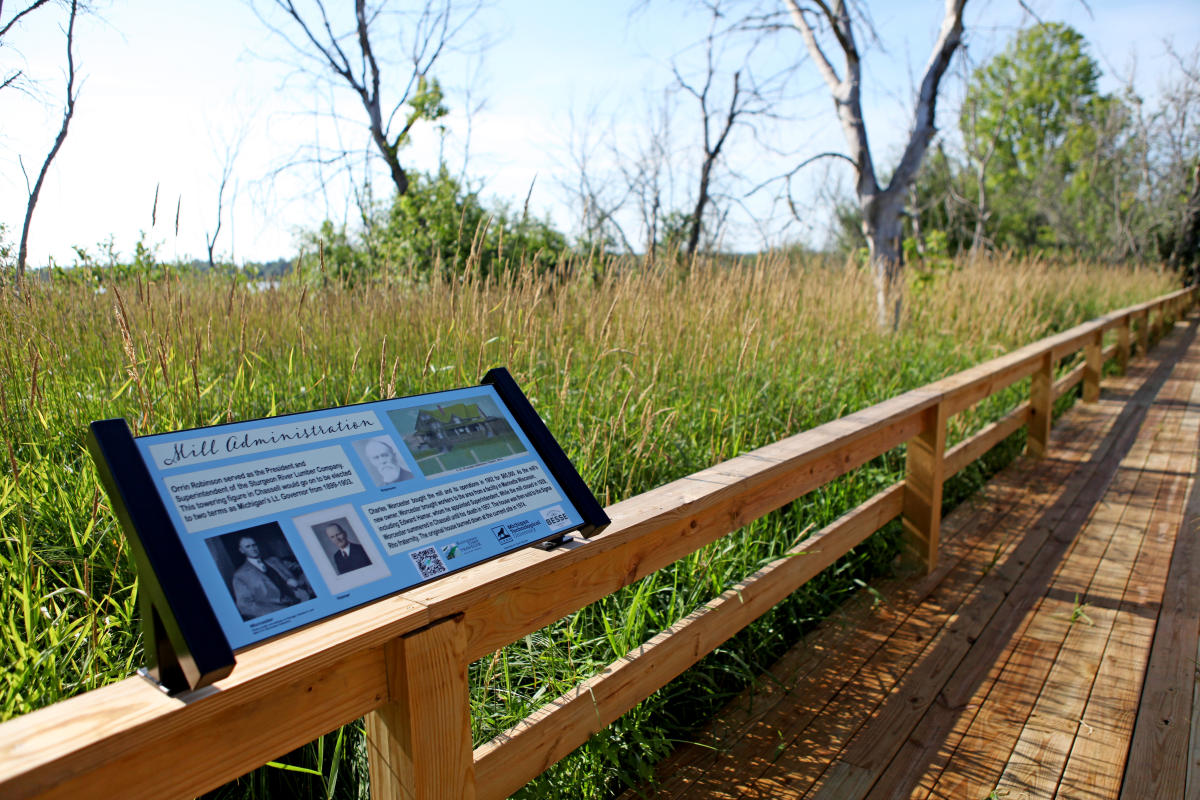
The Chassell Historic Trail has nine interpretive signs that teach visitors about the lumber mills that used to exist in this location.
The .4-mile-long trail loops around a wetlands area starting at the southern end of Chassell Centennial Park. The first portion of the trail follows along the route of the railroad that ran through the Chassell area. It takes you past the site where the “Chassell House” existed before taking you down towards the water where the mill operated. The trail offers nine interpretive signs that provide more information about the lumber operations and people working in the area at the time of timber production. The signs include QR codes that take you to a children’s storybook about the history of the area. We also suggest using the Keweenaw Time Traveler historic maps for visual representation of the area during operation of the lumber mills.

The Keweenaw Time Traveler Historic Maps offer visual representation of the mill that existed in Chassell, MI.
Visit the Chassell Heritage Center
The Chassell Heritage Center is located in the former H.E. Southwell Memorial School. The school was built in 1917 after two previous school buildings were destroyed in a fire. Charles Worcester and his wife Mary donated money to build this building, and it was named H.E. Southwell Memorial School in honor of Mary’s father.
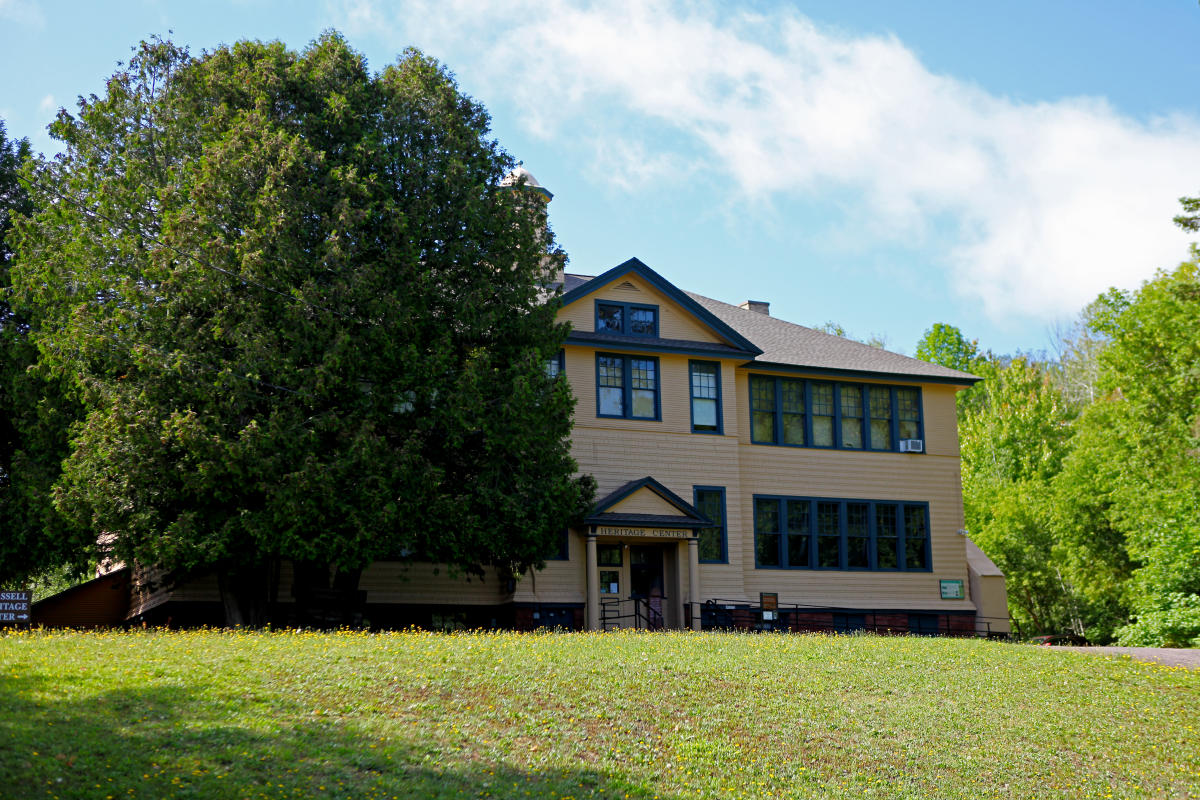
The Chassell Heritage Center offers a museum and programming during the summer months.
The Chassell Heritage Center is open to the public during the summer months and features several exhibits that offer a glimpse into Chassell’s past. Explore Chassell Township’s timeline to learn about early settlers in the area, Chassell’s transition from lumber to farming, and more. The Heritage Center also features Thursday evening programs at 7:00PM during July and August.
Honor Chassell’s War Heroes
Many young men from the Chassell area were drafted to fight in both World War I and II. A celebration and parade were held to honor returning military heroes at the end of each war. Today, visitors interested in war history can visit the Chassell Heritage Center. A memorial to Chassell’s fallen World War I soldiers can be found in the Chassell Cemetery and a monument in memory of the fallen World War II soldiers is located by the entrance of the ballfield.
Float the Sturgeon River
Take in the beauty of the Chassell area as you float the Sturgeon River. Follow the path that cut logs once took, taking the canal cut to Pike Bay. Keep your eyes open for the access point for the Chassell Historic Trail. Your kayak or canoe can easily be beached at this point as you explore the former site of the lumber mill. There are several access points along the Sturgeon River where you can begin your trip. Check out our guide to floating the Sturgeon River here.
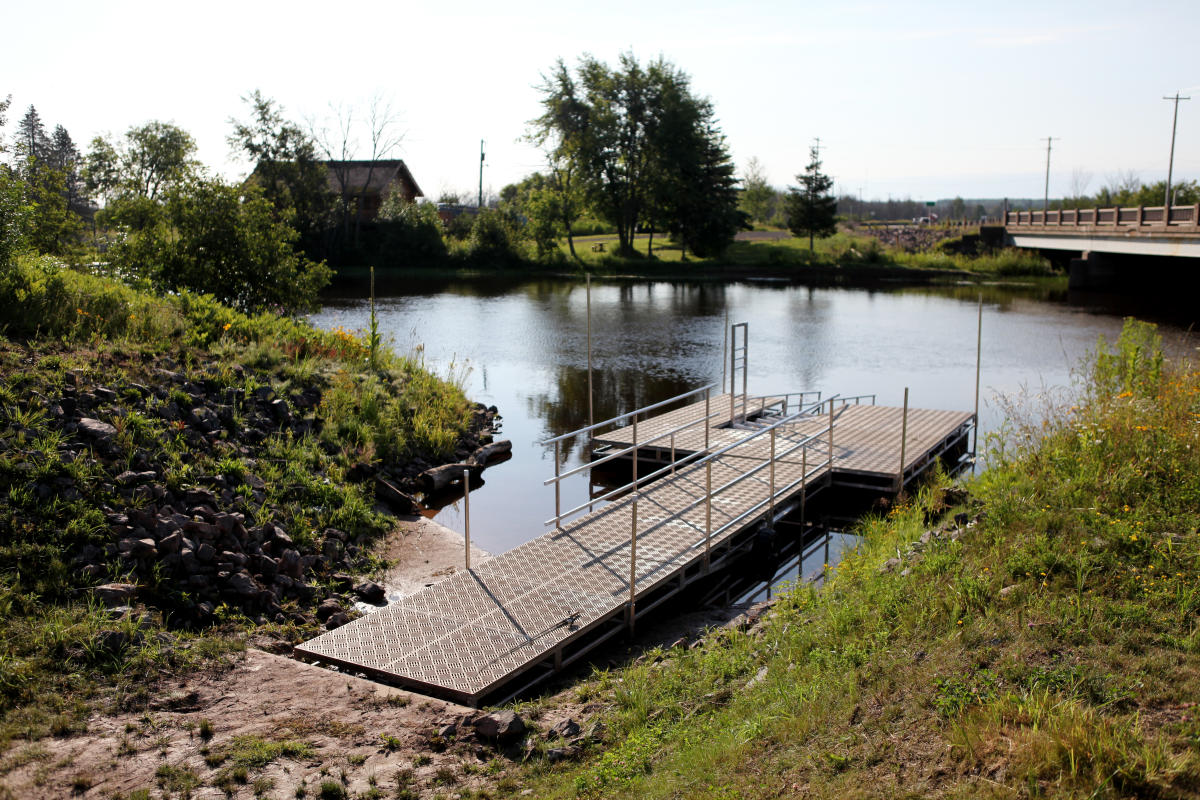
There is a public kayak launch just east of Half Moon Lake Road and the US-41 intersection where the highway crosses the Sturgeon River.
Drop a Line in Pike Bay
Chassell is a great place to drop a line! Head to Centennial Park to launch your boat or fish from the boat launch. If you need bait or supplies, there is a small bait shop located just across from the entrance of Centennial Park on US-41. Centennial Park has an excellent fish cleaning station, just make sure to check Michigan fishing regulations before keeping any fish. If you need additional assistance, we highly recommend booking a guided fishing trip with one of our professional local guides.

The Chassell Centennial Park boat launch makes fishing Pike Bay a breeze.
Attend a Farmers Market
Taste the local difference by grabbing ingredients for dinner at the Chassell Farmers Market. Our local farms sell everything from fresh meat and eggs to fruits, vegetables, soaps, and flowers. Many of our local growers run multi-generational farms, using farming techniques and traditions passed down throughout the years.
The Chassell Farmers Market takes place on Wednesdays from 3 to 6 PM during the summer months. If you can’t make it to the Chassell Farmers Market, you can also find Chassell area farmers vending at other Keweenaw farmers markets.
Get Outside
Outdoor recreation is an important part of Chassell's history, and the community welcomes you to enjoy their trails and recreational facilities.
During the winter months visitors have access to approximately 10 kilometers of cross-country ski trails and over 10 kilometers of snowshoeing trails. The trailhead is located behind the Chassell Heritage Center but can also be accessed from Archambeau Road and old ice rink trailheads. Additionally, the snowshoe trails can be accessed from the Marinette Street trailhead.
In the summer, visitors are welcome to walk or run on the Chassell trails. The 4 kilometer/ 10 station fitness trail and Misslitz Field Baseball Park can also be accessed behind the Chassell Heritage Center.

Chassell has an extensive trail system that can be used for activities throughout the year.
Chassell also has a 9-hole disc golf course that is located behind the Chassell Township Schools. This disc golf course is open to the public as long as school is not in session.
Visit the Chassell Centennial Park
Chassell's Centennial Park is a great place to spend the afternoon. In addition to the boat launch, the park offers a beach area, a playground, sand volleyball court, basketball court, and Horeshoe pits. The pavilion can be rented for weddings during the summer, and in the winter, it is used as an ice rink for recreational skating and hockey. Be sure to bring your pups with you and let them run and play at the Chassell Bark Park. Located within Centennial Park, this was the first fenced off-leash dog park in the Upper Peninsula.

Bring your pups to the Chassell Bark Park and let them run and play off-leash.
Mark Your Calendar for Strawberry Festival
According to an exhibit at the Chassell Heritage Center, the Chassell Strawberry Festival is the oldest, continuously running festival of its kind in Michigan. If you have yet to taste a Chassell strawberry, then you need to put the Chassell Strawberry Festival on your calendar for the upcoming year. This fun-filled festival takes place the weekend after the 4th of July each year.

The Strawberry Festival has been a Chassell tradition since 1949. | Photo courtesy of MTU Archives
Sources & Credits
Most information in this blog was made possible thanks to Chassell.info’s History by the Decades page and through information gathered at the Chassell Heritage Center.
Interested in updates, travel tips and quirky information about the Keweenaw? Just sign up for the Keweenaw Explorer, our monthly e-newsletter. Complete the form…

